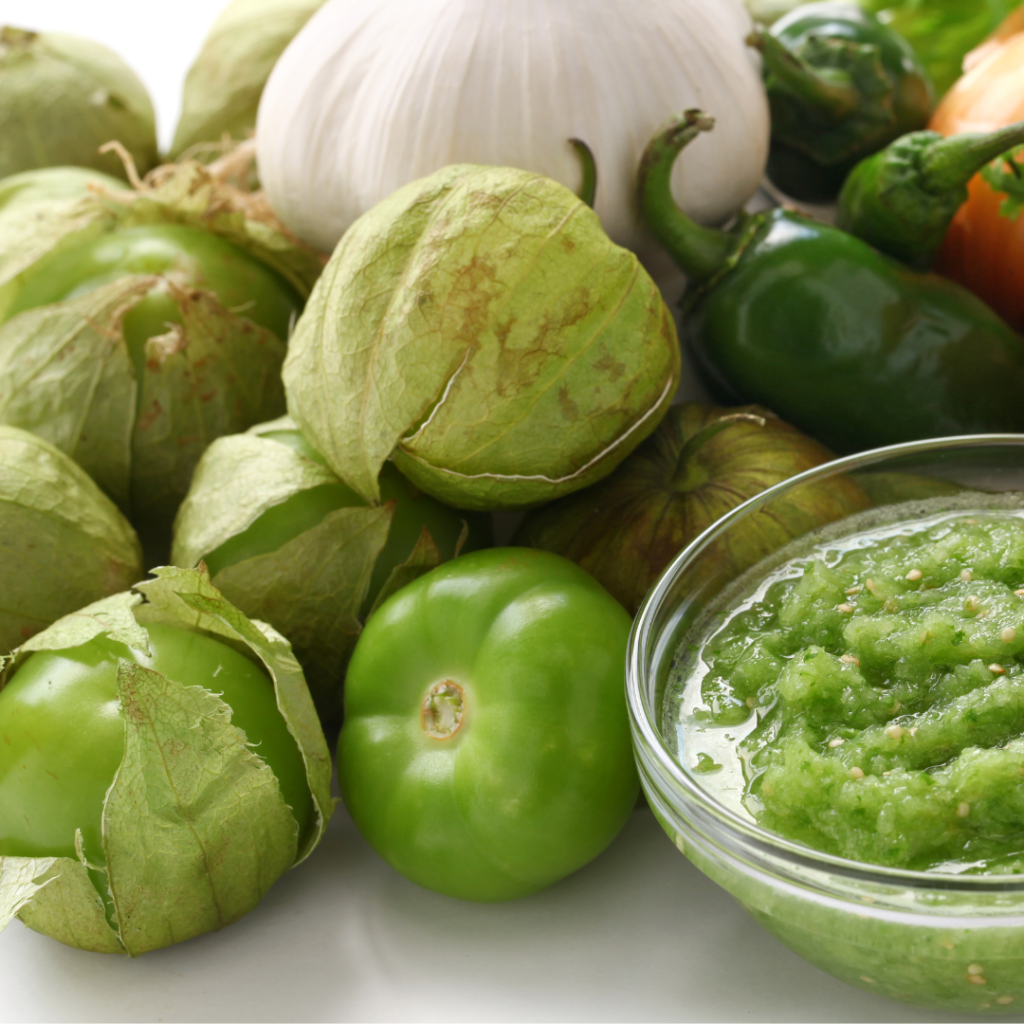
Order your Tomatillo Plants Here.
A must-have for Mexican cooking, Tomatillos are one of the most versatile plants you can grow in your garden. They are a member of the nightshade family and grow just like regular tomatoes. Unlike classic tomatoes, the fruit is typically smaller, stays green, and grows inside a thin, papery husk that turns brown when ready to harvest.
The tomatillo plant is a profuse producer and will put out hundreds of tangy, tart, citrusy-flavored fruits. Tomatillos are both low in calories and high in nutrients like vitamin C, vitamin K, and potassium and a good source of fiber and niacin.
Tomatillo Plant Care
Like tomatoes, tomatillos can be planted deep and, in fact, the plant itself will be stronger and more productive if you plant the majority of the stem underground. Just leave the top section of leaves above ground. Plant each plant 2’ apart but you must plant at least two plants together – tomatillos are not self-pollinating.
They prefer full sun at least six hours per day and grow best in well-drained, loamy, and slightly acidic soil. Plant after all danger of frost and protect in the fall from extra chilly nights. Keep consistently well-watered and avoid splashing water on leaves.
Plants will benefit from staking or caging as they can become quite heavy with fruit. With care, tomatillos can be trained to grow up a trellis. They can be planted in a container with good drainage (one per plant per pot). To encourage bushier growth, snip off the tips of branches with a clean garden shears.
Tomatillo Harvesting Guide
Tomatillos are ready to harvest around 60 days after planting the seedling. The more you pick, the more they will produce! Fruit is ready to pick when the fruit feels firm and the husks are papery and dry. Simply twist the fruit off the vine and remove the husk before cooking (just rub gently with your fingertips and it will fall right off). Most tomatillo plants are indeterminate which means they will continue producing fruit all season until the first hard freeze.
Like tomatoes, they do not need to be refrigerated and, if stored in a cool, dark place (with the husks on) will keep for up to two weeks. They can be eaten fresh as a salad or taco topping; frozen (after blanching) or canned; roasted or grilled; added to soups and stews; or cooked into salsa verde or enchilada sauce.
